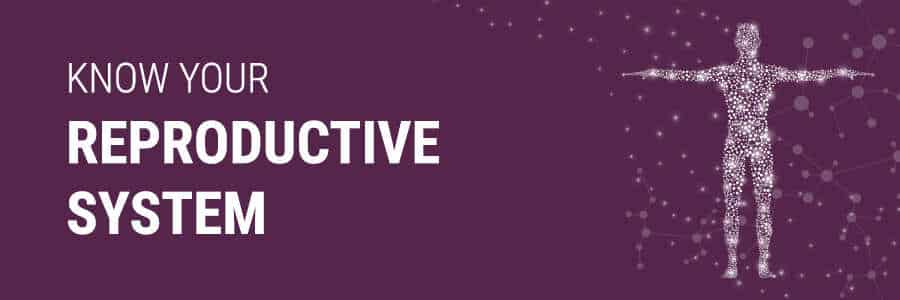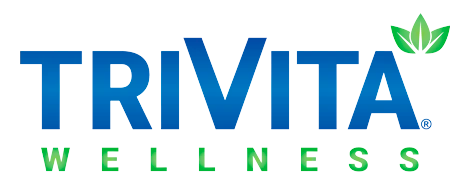
The System functions:
The reproductive system is a set of organs that work together to produce offspring. Many non-living substances, such as fluids, hormones
Female Reproductive System – Responsible for the production and transportation of female gametes and sex hormones. The female reproductive system also facilitates the fertilization of ova by sperm and supports the development of offspring during pregnancy and infancy. The ovaries are located on both sides of the uterus. The ovaries produce estrogen, progesterone and eggs. Estrogen and progesterone stimulate breast growth and are essential to female reproductive functions.
Male Reproductive System – Responsible for production and transportation of male gametes and sex hormones. The testes are located in the scrotum and secrete hormones known as androgens, chiefly testosterone. Androgens affect sexual development, facial hair, pubic hair and sperm production.
Associated organs:
Female – Ovaries, fallopian tubes, uterus, vagina, clitoris, vulva, labia and urethra
Male – Testes, vas deferens, prostate, penis and urethra
What you can do to help support a healthy Reproductive System:
Recommended Dietary Supplements: Balanced Woman, Prostate Health Formula.
Amazon Herb Supplements: Rejuvenate, Warrior.
Essential Vitamins & Minerals: Vitamin B9 (Folic Acid), Vitamin C, Zinc.

Foods to include:
Fruits
Avocado, Pears, Peahes, Plums, Figs, Mango, Blueberries
Vegetables
Kale, Spinach, Brussels Sprouts, Yams, Bell Peppers, Beets, Carrots
Protein/Dairy
Organic Pasture-Raised/Grass-Fed Chicken & Turkey, Bison, Elk, Wild-Caught Fish, Pasture-Raised Eggs, Raw Butter/Ghee
Nut & Seeds
Quinoa, Pumpkin Seeds, Almonds, Brazil Nuts, Chia Seeds, Flaxseeds, Walnuts
Miscellaneous
Lentils, Coconut Oil, Cinnamon, Turmeric, Garlic, Ginger
NOTE:
Be sure to do your best to shop organic, grass-fed, free-range, unprocessed and low sodium.
Daily morning cleanse: 8-12oz of lemon water.
Foods you should avoid or limit:
Do your best to read the labels on packaged food. If the names are too hard to pronounce, they are likely chemical based ingredients and not very good for you.
- Processed and high-sodium foods such as cured ham, bacon, sausage
and potato chips. - Foods that contain all-purpose flour such as pizza, bagels, pretzels, white bread, and flour tortillas.
- Foods containing artificial sweeteners like Sucralose such as yogurt, cereal, whole grain muffins
and bread and microwave popcorn. - Beware of “reduced sugar” labels which are usually loaded with artificial sweeteners such as fruit juice, ketchup, jams, jelly, syrup, soda, sports drinks, ice cream
and salad dressings.
Artificial sweeteners you should try to avoid:
Aspartame, Acesulfame potassium, Alitame, Cyclamate, Dulcin, Equal, Glucin, Kaltame, Mogrosides, Neotame, NutraSweet, Nutrinova, Phenylalanine, Saccharin, Splenda, Sorbitol, Sucralose, Twinsweet, Sweet ‘N Low, Xylitol
Recommended activities:
Physical activity is essential for good health. New studies show even 15 minutes of elevated heart rate from activity has numerous benefits. Find activities you enjoy doing and aim for at least 15 minutes 4 to 5 times per week.
- CARDIO: Biking, Hiking, Walking, Running, Swimming, Dancing, Zumba
- STRENGTH: Weight Training, Pilates, Vigorous Yoga, P90X, Crossfit, Barre
- FLEXIBILITY: Yoga, Tai-Chi and Stretching
- Exercises Specifically for Females: Pelvic Floor Exercises, Kegel Exercises

Additional information:
Common Symptoms:
Painful menses, hot flashes, irregular cycles, pelvic cramps, vaginal discharge, miscarriages, pregnancy complications, breast tenderness, nipple discharge, weight gain, impotence.
Common Disorders:
Common Disorders — Female:
- Abnormal Pap Smear
- Cervical Abnormalities
- Changes in Libido – Change in overall sexual drive or desire.
- Human Papillomavirus (HPV) – A viral infection that is passed through skin-to-skin contact that causes warts on various parts of the body.
- Lumps in Breasts – Fibroids, masses and lumps, and Breast changes which are dimpling or orange peel appearance.
- Ovarian Cysts – Solid or fluid-filled sac or pocket within or on the surface of an ovary.
- Painful Menstrual Cycles
- Polycystic Ovary Syndrome (PCOS) – A hormonal disorder causing enlarged ovaries with small cysts on the outer edges.
- Sexually Transmitted Diseases (STD) – Various diseases or infections that can be transmitted by direct sexual contact.
- Vaginal Infections – Internal or external infection of the vagina.
Common Disorders — Male:
- Changes in Libido – Change in overall sexual drive or desire.
- Erectile Dysfunction (ED) – Inability to maintain an
erection sufficient for sexual activity. - Benign Prostatic Hyperplasia (BPH) – Age-associated prostate gland enlargement that can cause urination difficulty.
- Acute and Chronic Bacterial Prostatitis – Bacterial infections of the prostate.
- Chronic Prostatitis – Chronic nonbacterial infection that causes pelvic pain and inflammation.
- Sexually Transmitted Diseases (STD) – Various diseases or infections that can be transmitted by direct sexual contact.
Download:
You can download a copy of the Reproductive System information found on this page to keep for your


